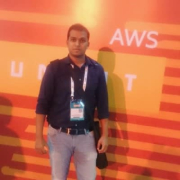

AWS Elastic Disaster Recovery and Precisely Assure QuickEDD compete in the disaster recovery market. AWS holds an upper hand with integration and scalability advantages, whereas Precisely is preferred for specialized needs.
Features: AWS Elastic Disaster Recovery provides seamless cloud integration, automated recovery, and scalability. Precisely Assure QuickEDD features real-time replication, cross-platform capabilities, and specialized support for complex legacy systems.
Ease of Deployment and Customer Service: AWS Elastic Disaster Recovery offers cloud-native deployment with extensive support in the AWS ecosystem. Precisely Assure QuickEDD requires more setup and expertise but provides targeted support for specific infrastructural needs.
Pricing and ROI: AWS Elastic Disaster Recovery offers flexible pricing with positive ROI for cloud implementations. Precisely Assure QuickEDD has a higher upfront cost but delivers ROI in environments needing detailed data consistency and integrity, offering value in complex settings.
| Product | Market Share (%) |
|---|---|
| AWS Elastic Disaster Recovery | 1.7% |
| Precisely Assure QuickEDD | 1.2% |
| Other | 97.1% |

| Company Size | Count |
|---|---|
| Small Business | 5 |
| Midsize Enterprise | 4 |
| Large Enterprise | 7 |
CloudEndure Disaster Recovery enables real-time replication and rapid recovery to enhance organizational resilience. Key features include block-level data replication, ease of use, cost-effectiveness, and automated recovery orchestration. Users benefit from increased efficiency, improved workflows, and enhanced data management, significantly improving organizational performance and business continuity.
Protecting critical IBM i applications from downtime and guarding against data loss with simple, scalable, full-featured high availability and disaster recovery products
We monitor all Disaster Recovery (DR) Software reviews to prevent fraudulent reviews and keep review quality high. We do not post reviews by company employees or direct competitors. We validate each review for authenticity via cross-reference with LinkedIn, and personal follow-up with the reviewer when necessary.